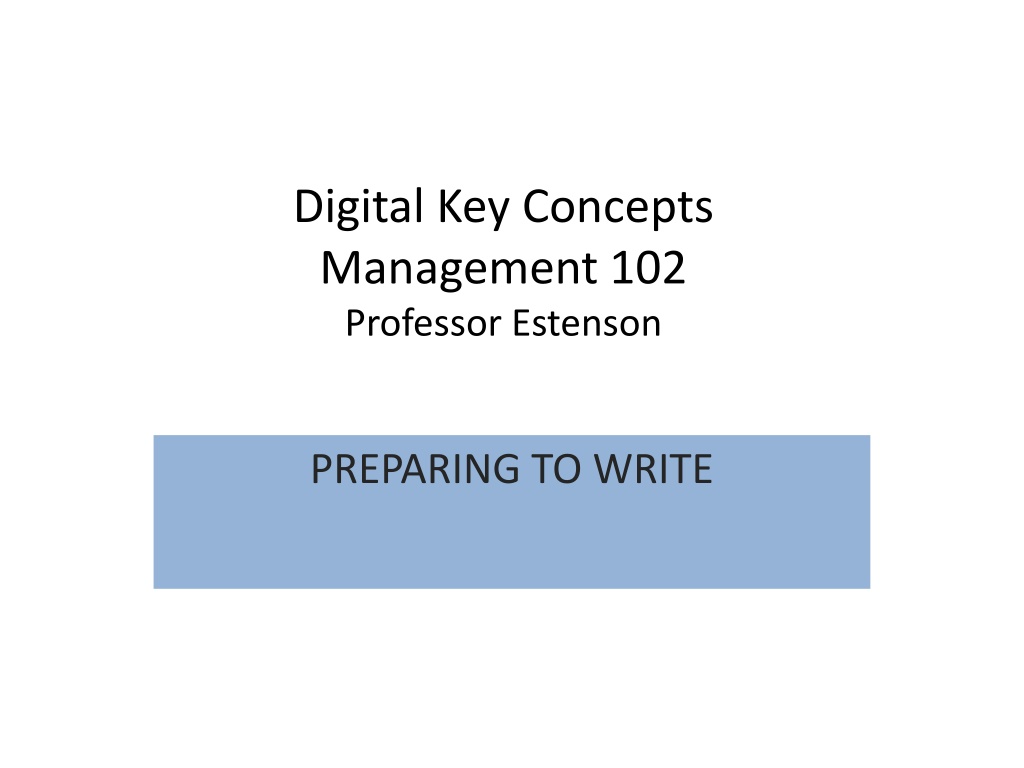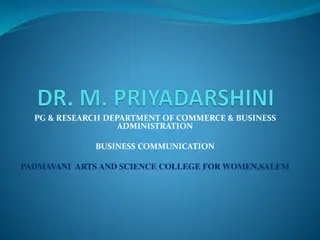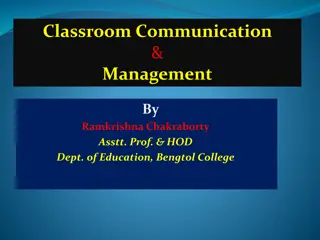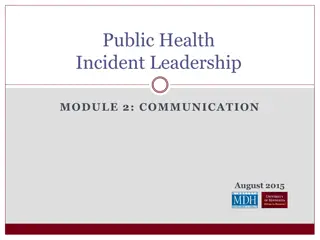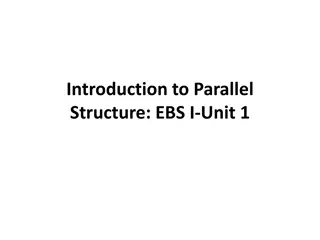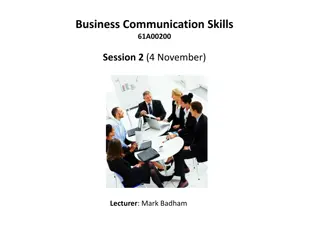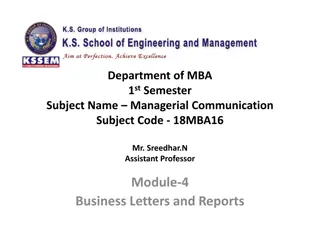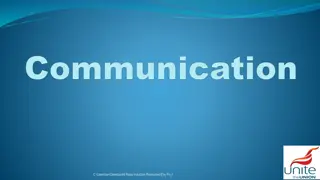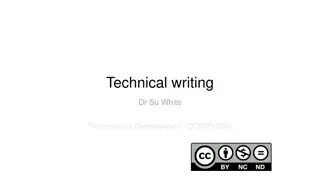Effective Business Writing Principles for Clear Communication
Explore key concepts in digital management, writing apprehension causes and fixes, planning considerations, and essential principles for impactful communication including choosing words precisely, using short words for clarity, favoring concrete over abstract words, economizing on word use, avoiding overused phrases, utilizing positive language, and adopting a conversational style.
Download Presentation

Please find below an Image/Link to download the presentation.
The content on the website is provided AS IS for your information and personal use only. It may not be sold, licensed, or shared on other websites without obtaining consent from the author. Download presentation by click this link. If you encounter any issues during the download, it is possible that the publisher has removed the file from their server.
E N D
Presentation Transcript
Digital Key Concepts Management 102 Professor Estenson PREPARING TO WRITE
Writing Apprehension CAUSES Early Efforts Never Been Taught Lack of Knowledge of purpose, audience or point of the effort FIXES Work Shops Write then Right Supportive Evaluation
PLANNING WHAT Nature of the message What needs to be communicated? WHY Why bother? Does the receiver know why message is being sent? WHO Have I chosen the right person? What channel is this person comfortable receiving? WHEN Too early or too late. Close to critical meetings WHERE Where should the message come from? HOW Channel (Letter, Memo, Report, Email, Phone Call, Brochure, Newsletter, Manual
PRINCIPLE ONE: Choose Words Precisely DENOTIVE - Word has a common meaning. Malapropism - Confusing one word for another Allegory or Alligator Immoral or Immortal CONNOTATIVE - Word s meaning is subjective. Euphemism (Intended positive connotation) Slim or Slender versus Skinny or Scrawny Friendly Fire Surgical Air Strike LANGUAGE IS FLUID NOT STATIC
PRINCIPLE TWO Use Short Rather Than Long Words The goal is clarity and understanding not a chance to show how smart you are.
PRINCIPLE 3 Use Concrete Rather Than Abstract Words Concrete Specific at lower rung General at the higher rungs
PRINCIPLE 4 Economize on the Use of Words Avoid Wordiness. Break old writing habits. Avoid use of old models of organizational writing.
PRINCIPLE 5 AVOID OVERUSED OR HACKNEYED PHRASES OR JARGON Hackneyed At your earliest convenience Pursuant to Thank you in advance Jargon Buzzword Hell
PRINCIPLE 6 Use Positive Words That Convey Courtesy Minimize negative information State information positively Avoid gender terms
PRINCIPLE 7 Use a Conversational Style Everyday business language (face to face communication with receiver) Check your understanding of receiver (knowledge, expertise, interests, culture, and value system)
PRINCPLE 8 Keep Sentence Relatively Short Most effective business sentences are between 15 to 20 words long. Sentences express one main point
PRINCIPLE 9 Prefer Active Voice to the Passive Voice Subject - Verb - Object David Leeper directed the meeting. (A) The meeting was directed by David Leeper (P)
PRINCIPLE 10 Develop Effective Paragraphs One Main Idea Per Paragraph Determine if Deductive or Inductive If Deductive - Present main idea in lst sentence If Inductive - Begin with details then main idea Use a Variety of Sentence Structures Emphasize Important Points Keep Paragraphs Short
PRINCIPLE 11 DEVELOP COHERENCE Create a smooth flow between sentences Transitions can be created by Repeating Key Words Use pronouns and synonyms to avoid repetition Use transitional words or phrases
PRINCIPLE 12 Edit and Rewrite Read what was written Exam for clarity, concreteness, and conversational tone Determine grammatical accuracy Check organization to assure coherence Accept that multiple drafts are necessary
Specific Check Points Look for Plain English terms Eliminate Unneeded Words Explain Abbreviations and Acronyms Eliminate Jargon Eliminate Unnatural Phrases Use Small Words
EDITING (Continued) Use Active Instead of Passive Verbs Use a Fog Index Correct Spelling and Grammatical Errors Correct Sexist Errors
Work Products Audience analysis for each letter or memo. Refusal Letter Persuasive Letter Memo to your leader Transmittal Letter You are free to pick topic and audience. Remember to write in a manner that matches your topic and audience.
